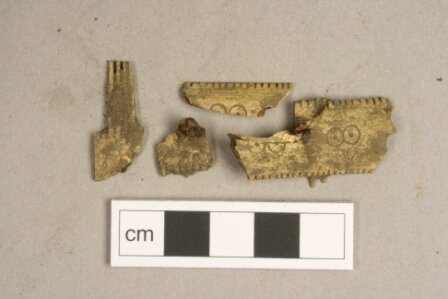Aberlady Angles Community excavation: Anglo-Saxon Evidence from East Lothian
The large stone feature uncovered during the community excavations of the Glebe Field, Aberlady
In April and May AOC Archaeology Group worked with Aberlady Conservation and History Society and the local community to excavate a series of features in the village Glebe Field. These features were argued to relate to the Anglo-Saxon era (7th-10thC).
During the excavations community volunteers uncovered what appear to be the remains of small cellular buildings within which we found an early 9th century Anglo-Saxon coin, two bone combs (at least one of which is likely to date between the 6th to 8th centuries). The team also uncovered a carved antler with an animal's or bird's head.
This is great news within itself but the project also uncovered a 20m stone feature 4m wide which appears to be part of a more substantial rectangular building extending to 20m by 40m. Radiocarbon dating of a bone of a large mammal lying immediately beneath it tells us it lived during the 7th to 9th centuries.
Above: Skeletal remains of a large mammal underneath the feature & Double-sided decorate composite bone comb
The dates emerging from the project are consistent with those of the collection of Anglo-Saxon coins and other metal finds - the largest in Scotland - discovered during the 1980s and the fragment of the carved Anglo-Saxon cross found here in the 19th century. In short, it appears that the excavation has revealed further evidence of an important and wealthy Anglo-Saxon location. The post-excavation analytical work on this remarkable site continues.
More updates to follow!



